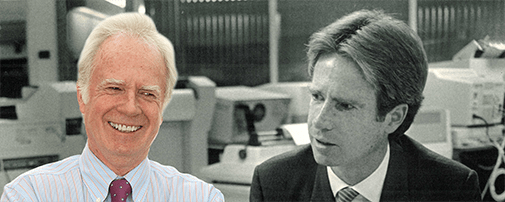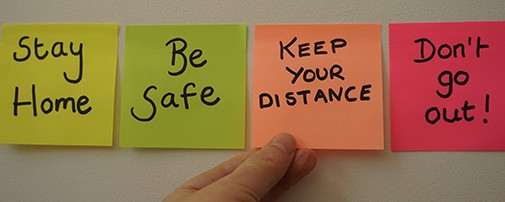

Back in 1985, four partners and I took the risk of starting our own consulting firm that we came to call Cambria Consulting. At the time, none of us would have gone out on our own as independent consultants, but together we felt and looked like a “small firm” that prospective clients would be willing to hire. That turned out to be true and the initial risk we took paid off over time with success as a boutique firm that has recently entered a new stage of organizational life as part of Spencer Stuart.
I have just retired after 35 years and at this turning point in my life, I find myself reflecting on the most meaningful lessons learned over those years.
To be sure, I am proud of Cambria’s success as a talent development and executive coaching firm that has served many large and small clients, survived multiple downturns, and managed to be profitable almost every year. But the most meaningful lessons I learned have more to do with the people I have worked with, both colleagues and clients, and the ways that we have worked together. Here are some of those lessons:
Culture does eat strategy for breakfast. Building a company culture that values people over financial success (or at least as highly) does attract, engage, motivate, and retain good people/clients, which leads to exceptional individual and organizational performance. At Cambria, we took our culture for granted until we started hearing our clients and staff talk about how good it felt to work with us. That’s when we began to recognize what we were doing to create it.
Collaboration builds better solutions. Cambria has had very smart and competent people over its 35 years, and their expertise was important to bring to the table. But I have found that collaboration is what turns that expertise into value-added solutions – ones that are more likely to be accepted and implemented by appreciative and empowered clients.
I recall multiple projects that initially seemed beyond our expertise, but individually and collectively we wanted to stretch ourselves and come up with an innovative solution. In one example, we collaborated with a team from NASA and the Alan Alda Center for Science Communication to develop and deliver a unique Science Communication training program combining “learning-by-doing” modules led by NASA experts, experiential “Improv” exercises led by the Alan Alda Center, and personal science communication projects that participants developed and refined during the course and then implemented after returning to their jobs. Participants consistently described it as the best training they had ever taken.
Humility is a leaders’ best friend. Downplaying one’s own expertise, contributions, or accomplishments while valuing those of others helps build confident, engaged, and loyal employees who want to do their best for their organization. And it feels good to see other people shine.
Servant leadership beats celebrity leadership. As Robert Greenleaf defined it in his original book, Servant Leadership, servant leaders share power, put the needs of employees first, and help people develop and perform as effectively as possible. Instead of people working to serve the leader, the leader exists to serve the people. “Celebrity” leadership may increase the brand visibility or financial success of the organization, but I personally prefer the qualities and positive impact of servant leadership, both within our client organizations and our own firm.
Humor helps keep the culture engine running smoothly. Humor keeps people from taking things too seriously and it lightens the mood or relieves tension when the going gets tough. Appreciative humor helps people feel good about who they are and what they are doing. Cambria folks know this, and humor is encouraged around the firm.
Challenging people to learn works better than teaching them. The most effective training programs I have been involved with spent less time teaching and more time challenging individuals and teams with solving real problems of importance to their organization and then debriefing what they learned from doing so. This “action learning” was more powerful and led to greater application back on the job.
One of my partners, John Hendrickson, has designed multiple programs like this, including a four-day, in-basket driven simulation for an insurance client that had four regional teams of participants performing real work and addressing real challenges from their jobs. Every team member rotated through the role of regional manager for a full day. The “teaching” of relevant training content was reduced to 30-minute “time outs” delivered twice a day. Follow-up calls with participants identified applications of learning that led to revenue increases and cost reductions that more than paid for the development and delivery of the program.
Asking good questions works better than giving good answers. Asking questions that help people discover their own answers to the challenges they are facing is more likely to lead to solutions that they can own and implement with confidence. This is the core skill of our executive coaches, and it produces insights and solutions that lead to real change in leadership behavior and development for higher levels of leadership.
Recognizing the efforts and accomplishments of colleagues and collaborators pays off in the long run. Catching people doing things right and giving them opportunities to do what they love and do well is more effective than pointing out what areas where they are less effective. This approach to recognizing and leveraging peoples’ strengths is key to successful employee engagement and development
As a final thought, I feel good about the projects that I have worked on over the years and the innovative solutions they have produced for clients. But what really stands out for me is, the people I have worked with, the experiences we shared and the friendships that developed as a result. I’m reminded of what successful people often say as they reflect on a long life – that ultimately what mattered most to them is family and relationships. That is true for me as well, both my personal family and my work family – this Cambria crew that I have been part of for 35 years. I treasure them and I will miss them.



